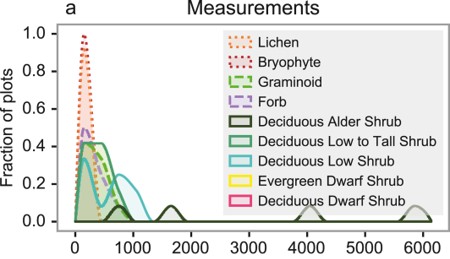

NGEE Arctic
Next-Generation Ecosystem Experiments
Advancing the predictive power of Earth system models through understanding
of the structure and function of Arctic terrestrial ecosystems
Integrating Arctic plant functional types in a land surface model using above- and below-ground field observations
Integrating Arctic plant functional types in a land surface model using above- and below-ground field observations
Assess whether plot-scale measurements of species diversity, plant biomass, and its allocation above- and below-ground can improve PFT representation in the E3SM land model (ELM).
Six dominant plant communities were surveyed along a hillslope gradient at the Kougarok field site and were characterized along with extensive site details.
Nine PFTs were identified and incorporated into ELM; simulations were run to assess improvement against original configuration of the model (e.g., grasses and shrubs).
New PFTs improved representation of the variability in biomass across different plant communities in the study area, particularly for highly productive alder shrublands.
When projected into future climate conditions (RCP 8.5 through 2100), simulations with arctic PFTs showed increased vegetation C storage in communities dominated by alders and other tall shrubs.
Smoothed histogram of vegetation distribution simulated by ELM.
